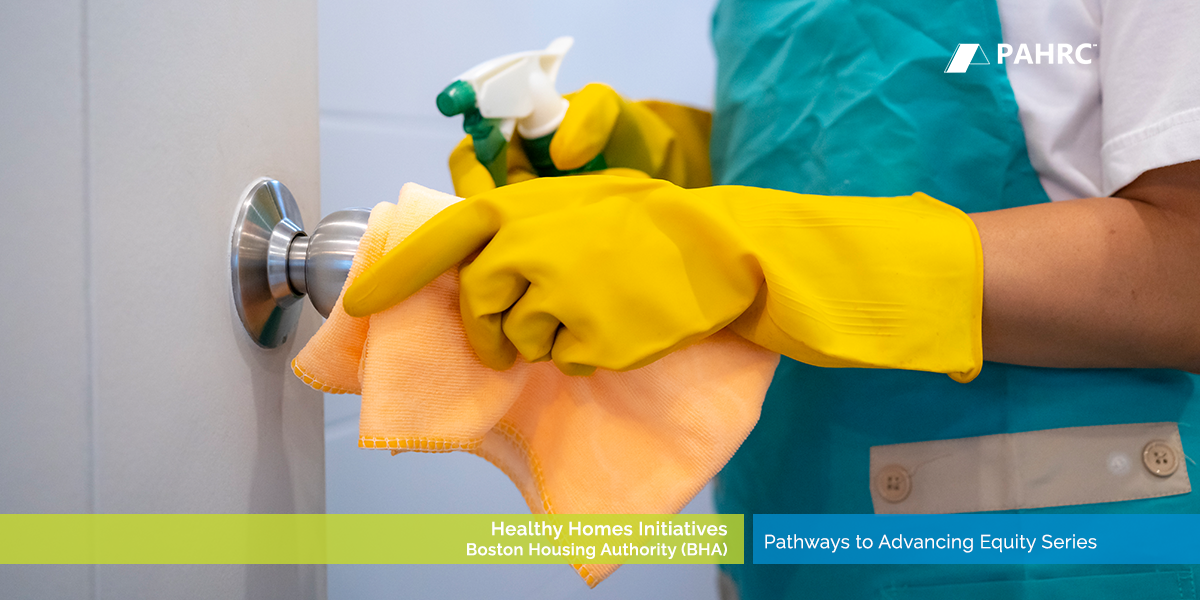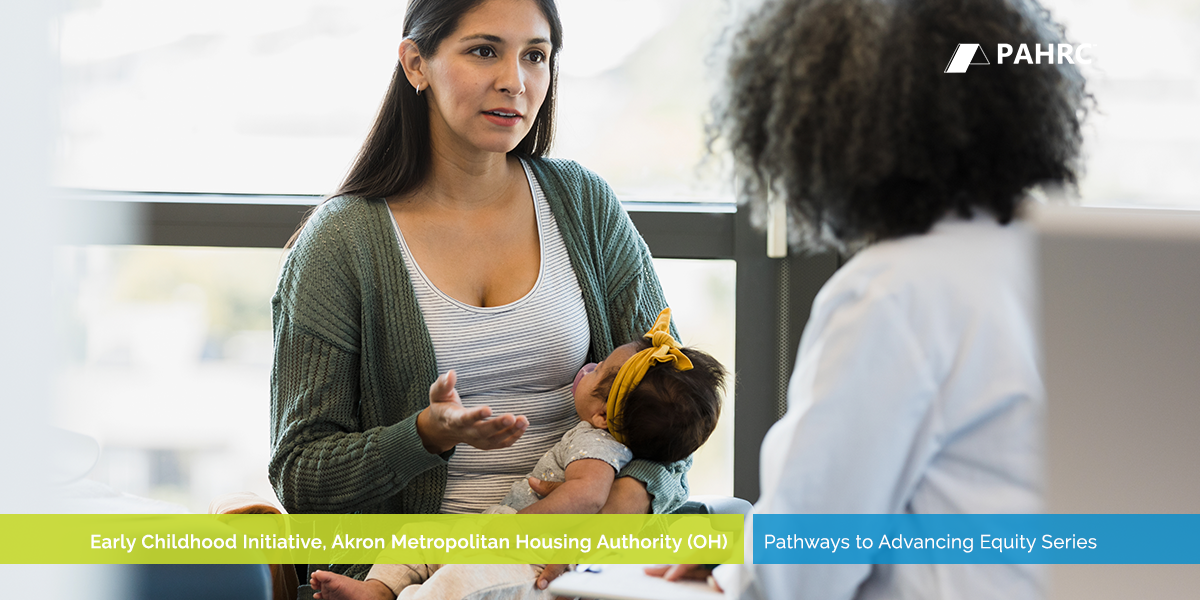Providing the best for public housing residents sometimes means taking a multifaceted approach that marries in-house expertise and partnerships with outside agencies.
Boston Housing Authority (BHA) adopted such a tactic, and it has proven successful: BHA’s Healthy Homes Initiatives comprises a group of beneficial programs that improve public housing residents’ living conditions and health outcomes.
BHA’s Healthy Homes Initiatives is featured in “PHA Pathways for Advancing Equity,” a report released by the Public and Affordable Housing Research Corporation (PAHRC), a member of HAI Group’s family of companies.
Challenge
Indoor environmental health hazards, such as mold, lead, and pest infestations, pose significant health risks, especially for children and other vulnerable populations, if not promptly addressed.
Solution
BHA has collaborated with health nonprofits, universities, community organizations, and public agencies to integrate design principles into redevelopment projects and to incorporate pest management practices into operational routines.
Implementation
BHA performs inspections, assessments, and remediation efforts to address hazards. Additionally, staff lead educational and outreach initiatives to enhance residents’ and property managers’ understanding of healthy home practices.
Design Principles
Between 2011 and 2014, BHA collaborated with the Harvard School of Public Health and the Committee for Boston Public Housing to assess the impact of integrating healthy housing features. The Boston Residential Investigation on Green Healthy Transitions (BRIGHT) study revealed that adopting features aligned with the eight principles of public housing led to improved air quality, reduced symptoms of sick building syndrome, and fewer hospital visits for asthma.
Principles include:
-
High-quality insulation and ventilation
-
Use of materials and finishes free from volatile organic compounds (VOCs)
-
Adequate building drainage
-
Sealing of cracks in the home
Integrated Pest Management (IPM)
From 2006 to 2010, BHA, in collaboration with the City of Boston Public Health Commission, the New England Asthma Regional Council, Tufts University, Harvard University, and Boston University, evaluated the impact of pests and pest control methods on asthma.
Research indicated that traditional pest control methods were largely ineffective and triggered allergic reactions in nearly 60% of children. To address this, BHA adopted IPM principles, focusing on reducing pest exposure through low-exposure pesticides and preventive measures. Additional strategies included:
-
Educating residents on sanitation
-
Utilizing vacuums with high-efficiency particulate air (HEPA) filters
-
Eliminating food and water sources for pests
-
Employing sticky traps to monitor cockroach activity
-
Sealing holes to prevent pest entry
-
Inspecting and monitoring infested areas
Children with asthma living in IPM-treated properties reported symptom improvements during the study. Following the program’s success, BHA expanded IPM to all properties in 2008 and secured funding to hire 10 residents as health advocates. These advocates educated peers about IPM principles, assisted with reducing home clutter, filed work orders, and connected residents with support services. Multilingual health advocates and public health campaigns further promoted awareness about pesticide risks and encouraged IPM adoption.
BHA conducts annual inspections for pests and engages residents through a tenant coordinator and community meetings with the pest control contractor.
Asthma Intervention
Residents of public housing or those receiving rental assistance in Boston experience significantly higher rates of asthma compared to low-income renters without assistance. To address these disparities, BHA partnered with Boston Medical Center and the Boston Public Health Commission to offer asthma in-home training and environmental assessments conducted by community health workers.
The Lenox Environmental Assessment Project (LEAP) enrolled 160 families over three years, providing:
-
Cleaning supplies
-
Health and safety inspections
-
Multiple home visits from community health workers
-
Assistance with filing work orders to address identified health hazards
Residents who live in public housing or receive rental assistance in Boston have disproportionately higher rates of asthma compared to low-income unassisted renters. To address these disparities, BHA partnered with Boston Medical Center and the Boston Public Health Commission to provide residents with asthma in-home training and environmental assessments from community health workers.
Additional Programs
BHA has a history of partnering with the Boston Health Commission, community members, and social service agencies to connect residents with community health workers and social service providers to enhance health equity.
From 2001 to 2015, Partners in Health and Housing funded resident health advocates to lead walking groups and provide education on:
-
Oral health
-
Nutrition
-
Mental health
-
First aid
-
Navigating the health system
-
Tobacco cessation programs
Additionally, the With Every Heartbeat is Life program offered workshops on heart disease prevention, led by community health workers.
Impact
Residents of BHA properties that implemented healthy housing design principles were less likely to experience:
- Inadequate ventilation
- Mold
- Pest infestations
- Secondhand smoke exposure
- Sick building syndrome
- Asthma symptoms
BHA continues to expand its portfolio of properties incorporating healthy housing features to further enhance resident health outcomes. The organization received the Department of Housing and Urban Development (HUD) Secretary’s Award for Healthy Homes in recognition of its impactful policies and practices.
Properties that adopted Integrated Pest Management (IPM) principles also showed reduced incidences of cockroach infestations and reliance on chemical pesticides, contributing to better health outcomes.
Other housing authorities and organizations, including the Lowell Housing Authority, New York Housing Authority, Seattle Housing Authority, Kansas City (MO), Multnomah County (OR), and Children’s Hospital of Philadelphia (PA), have implemented similar initiatives to those of the Lenox Environmental Assessment Project (LEAP).
Conclusion
Through comprehensive programs such as integrated pest management and asthma interventions, BHA has made significant strides in enhancing the health and living conditions of its residents. These efforts set a benchmark for advancing equity in public housing.
For more detailed insights and similar case studies, refer to "PHA Pathways for Advancing Equity," a report by the Public and Affordable Housing Research Corporation (PAHRC), a member of HAI Group's family of companies.
This article is for general information only. HAI Group makes no representation or warranty about the accuracy or applicability of this information for any particular use or circumstance. Your use of this information is at your own discretion and risk. HAI Group and any author or contributor identified herein assume no responsibility for your use of this information. You should consult with your attorney or subject matter advisor before adopting any risk management strategy or policy.






